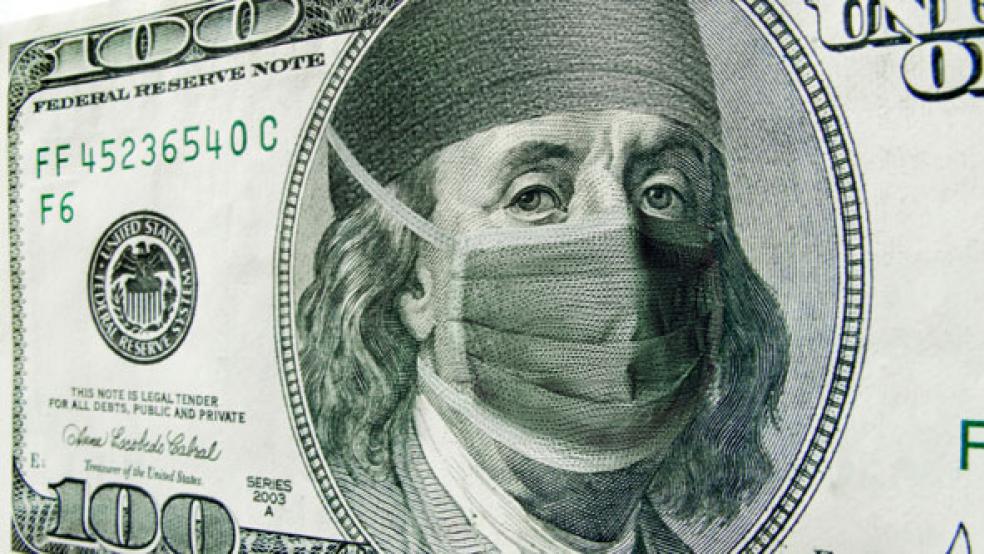Health care insurance benefits have been excluded from taxable income since 1943, when the National War Labor Board ruled employers, who were offering health plans as a way to attract workers without violating wartime wage-and-price controls, could deduct their cost as an expense without reporting their value as income for workers. As a result, employees get the benefit of the insurance without paying taxes on its value.

Workers weren’t the only ones who benefited from the ruling. Neither employers nor workers had to pay their half of the Social Security (and later Medicare) payroll taxes that would have been assessed at a higher rate, had it been paid as straight wages.
Today, the ever-growing cost of health care has turned that little loophole into a subsidy program that costs the Treasury an estimated $240 billion a year. It is the single largest tax expenditure in the federal tax code.
Economists across the political spectrum are united in their analysis of its impact. It allows employers to spend more on health insurance than they otherwise would. It leads workers, especially if they are unionized and have voice in how any wage increases are allocated, to fight for lower co-pays and deductibles since those are paid with after-tax dollars. The two factors working in tandem encourage overuse of health care services, which drives up spending and eventually premiums.
“It turns into a vicious cycle,” said Paul Fronstin, an analyst at the Employee Benefits Research Institute.
The exclusion is also unfair in the same way that any tax expenditure becomes unfair under a progressive income tax code. A person in the 30 percent tax bracket who gets a $15,000 family plan at work gets twice the subsidy as someone in the 15 percent bracket that belongs to the same plan.
Given the magnitude of the revenue loss, politicians from both sides of the political aisle have eyed limiting the exclusion for decades. President Ronald Reagan proposed capping it in the early 1980s.
In the late 1990s, Republican House majority leader Dick Armey, later known for his role in launching the Tea Party, joined Democrat Pete Stark, the ranking member of the Ways and Means Committee, in proposing to turn the exclusion into a refundable-but-capped tax credit. President George W. Bush twice called for turning it into a capped credit.
None of those proposals went anywhere out of fear it would disrupt the private insurance market and undermine employer-provided health insurance, where 160 million Americans get their coverage. Jon Gruber, the Massachusetts Institute of Technology health care economist who helped design both the Bay State and federal health care reform laws, estimated 10 to 15 million Americans would lose coverage with full repeal of the exclusion.
“There would also be a reduction in the cost of employer sponsored insurance as employers are more cost conscious with after-tax dollars,” Gruber said. “Whether it would actually bend the cost growth curve is another question about which I am really not sure.”
There’s a simple reason for that hesitancy. For most Americans who get seriously ill, responding to economic signals is not an option. “I’m not convinced that reducing or eliminating the break will lower health spending,” Fronstin of EBRI said. “You’ll definitely see less comprehensive coverage, but the 20 percent of the population that uses 80 percent of the spending probably won’t reduce their spending so the bulk of health care spending will be unaffected.”
It wasn’t until the Affordable Care Act (ACA), better known as Obamacare, that policymakers created the first chink in the tax exclusion’s armor. Over the strenuous protests of its labor union allies, the Obama administration – hungry for revenue to fund subsidies for the uninsured – included a cap on the tax exclusion for so-called Cadillac plans. Starting in 2018, the government will impose a 40 percent excise tax on health plans that exceed $10,200 for single coverage and $27,500 for family coverage.
“I wish the ACA had set the excise tax at a lower premium level, but the Republicans, whose idea this was originally, went AWOL and the issue had to be resolved within the Democratic caucus where unions, who love the exclusion because it helps them deliver one of the key fringe benefits that make union membership attractive, resisted any limitation,” said Henry Aaron, a health care economist at the Brookings Institution. “They gave in only because it was set so high that it would not have much bite.”
But those dynamics could change if a serious discussion about tax reform occurs next year. The key to further limits in the tax exclusion, the experts say, is full implementation of Obamacare with its creation of exchanges where people could turn for coverage when employers turn their plans into vouchers, which will be incentivized by limiting or eliminating the exclusion.
Last week, the Wall Street Journal reported that two major employers – Sears Holding and Darden Restaurants – next year will begin giving their employees a fixed sum of money to purchase coverage from online exchanges with different plan levels offered by the companies. It is the first step in turning their health care plans into a 401(k)-style defined contribution plan.
“Capping the exclusion will lead to more intense interest in lowering health insurance premiums, which can involve higher patient cost sharing or other features such as tiered or narrow networks,” said Paul Ginsberg, president of the Center for Studying Health System Change. “Most of the incentive to obtain coverage through employment would remain – it would just be less expensive coverage. On the other hand, if the tax exclusion were eliminated, this would lead to fewer employers providing coverage and a shift to health insurance exchanges as a way to obtain coverage,” he said.
Conservatives who back limiting or eliminating the exclusion believe it will hold down costs by spurring competition between insurers – the same arguments made for turning Medicare into a voucher program. Agreeing that many employers would drop coverage “even with the ACA employer mandate,” Joseph Antos, a health care analyst at the American Enterprise Institute, predicted “wages would trend up to compensate workers for the loss of the benefit. Insurers would adhere to ACA rules, which seem to keep benefits fairly high, but would try to develop lower cost products with those restrictions. Once the smoke settled, the typical policy would be less generous and less expensive since individuals would be more aware of the cost,” he said.
Liberals who back limiting the exclusion say it could work as long as a significant portion of the new revenue raised went to providing subsidies for low- and moderate-income people who will be forced into the exchanges to buy plans. For that reason, the exclusion, whether capped, turned into a credit or eliminated entirely, must be phased out gradually and only after the ACA is fully implemented.
“Getting rid of it entirely right now is a bad idea,” said Brookings’ Aaron. “Until the exchanges are up and running and the bugs are removed, that is a recipe for chaos and it will blow the financing of the ACA out of the water because it will also massively shift costs of insurance from private compensation to public taxes because of the exchange subsidies. There is nothing analytically wrong with such a shift over time. But it does have pretty profound political implications because Americans are so tax-phobic,” he said.
This is the third in a series of reports by Merrill Goozner “tax expenditures,” the tax exemptions and benefits that lower Americans’ taxable income.
Read More:
• Tax Reform: Mortgage Deduction is a Non Starter
• Lower Deductions for Sweet Charities Leave Sour Taste





